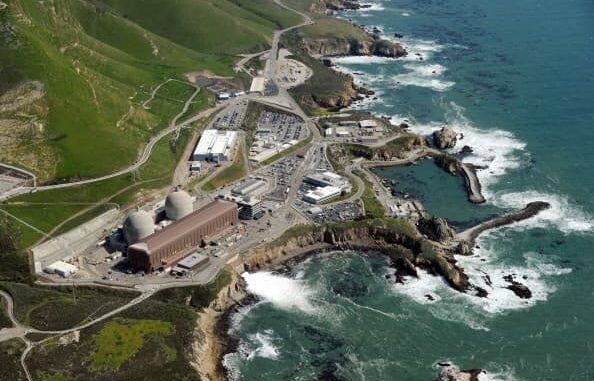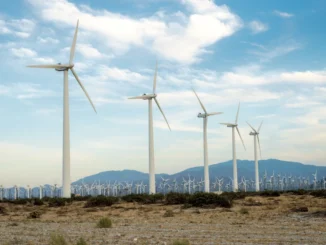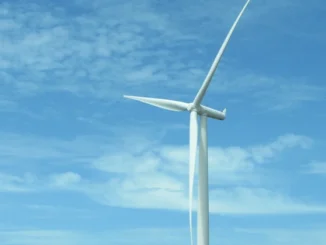
In the coming years, a nuclear power plant on the shores of Lake Michigan could become the first in the country to restart operations after shutting down.
The Palisades plant in southwest Michigan could be revived by a $1.5 billion loan from the U.S. Department of Energy, Bloomberg reported. Federal officials have not yet confirmed the funding, but Dr. Kathryn Huff, assistant secretary in the agency’s Office of Nuclear Energy, told Stateline that it would be “exciting” and “historic” to see the plant return to life.
The potential federal investment comes as state leaders in Michigan and elsewhere have worked to preserve their nuclear power capacity. Democratic Gov. Gretchen Whitmer successfully pushed for $150 million in state funding last year to support the Palisades restart. The plant is owned by Florida-based Holtec International, which bought it in 2022 to decommission it.
Reviving the plant “is really significant to make sure we can meet our clean-energy goals,” said Kara Cook, chief of staff with the Michigan Department of Environment, Great Lakes, and Energy. “This is really important to us not only from a climate perspective, but also the economic impact on the region.”
As states seek to transition to carbon-free electricity, some leaders acknowledge their climate change goals may be out of reach if they can’t keep their nuclear plants online. Nuclear has struggled to compete on cost with other power sources — while also facing concerns about safety risks and radioactive waste — but it provides 18% of the nation’s electricity. The closure of nuclear plants, some state officials fear, could lead to an expansion of fossil fuel-powered replacements, worsening the climate problem.
“You’re starting to see a lot of states transition to a position where they’re supportive of nuclear,” said Todd Allen, chair of the Nuclear Engineering and Radiological Sciences department at the University of Michigan. “And compared to 30 years ago, the amount of federal support for nuclear is unbelievable.”
California also received a boost of federal money in an award finalized last month to keep open a nuclear plant run by Pacific Gas and Electric, known as PG&E. Other states, including Connecticut, Illinois and New Jersey, have passed legislation in recent years to provide subsidies for existing nuclear plants.
Huff, the federal energy official, said U.S. nuclear production may need to reach 200 gigawatts — roughly double the current capacity — to provide clean, “always-on” power as less-constant solar and wind provide a growing share of the nation’s electricity. Last year, the Biden administration committed to an international pledge to triple nuclear capacity by 2050.
“We’re still going to need a significant amount of nuclear to back that all up,” she told Stateline. “Keeping existing plants online is the easiest way to ensure nuclear power can back up renewables.”
Meanwhile, both red and blue states have taken steps to allow for the development of small modular reactors, an emerging technology that backers say can help to power rural areas or industrial operations without the demands of a large plant. Six states — Connecticut, Illinois, Kentucky, Montana, West Virginia and Wisconsin — recently repealed bans on adding new nuclear power, in part to enable such reactors.
While some environmental groups have embraced the nuclear investments, others have pointed to long-standing concerns about safety issues, citing infamous accidents such as those at Three Mile Island, Chernobyl and Fukushima. Opponents also note the long-term issue of radioactive waste storage, and in some cases assert that nuclear can stall the growth of renewables such as wind and solar.
“With the amount of money that’s gone into this [Palisades] restart scheme already, you could develop brand-new renewable energy proposals that would be online in the same time frame producing more electricity,” said Kevin Kamps, radioactive waste specialist at Beyond Nuclear, an environmental nonprofit that opposes nuclear energy.
While more states have passed policies to give nuclear a boost, federal funding in Michigan and elsewhere could supercharge efforts to ensure plants stay open. The Department of Energy is distributing $6 billion from the federal infrastructure law to help save reactors that were slated for closure. The agency awarded funding to the California plant in the first round but has not yet announced awardees from the second round, although applications closed last May.
The agency also is overseeing a loan program — which reportedly will provide the Palisades funding — to repower or repurpose energy infrastructure.
The federal climate law passed in 2022 also opened tax credits for new and existing nuclear plants, designed to incentivize clean energy production in the same way existing credits support wind and solar. Since the passage of the tax credits, Huff said, federal regulators have seen an increased interest from plant operators pursuing license renewals to extend the operating life of their reactors.
Meanwhile, the CHIPS and Science Act passed by Congress also includes funding for federal nuclear research, university programs, new research reactors, isotope production and advanced reactors.
The federal support is providing “huge stimulation” to nuclear power while working in tandem with existing state efforts, said Christine Csizmadia, senior director of state governmental affairs and advocacy with the Nuclear Energy Institute, an industry trade association.
Michigan reboot
When Palisades closed amid financial struggles in 2022, it represented roughly 5% of Michigan’s electricity supply. That has been replaced largely with natural gas generation, Cook said. The expansion of fossil fuel-based power conflicts with legislation passed last year requiring the state to move to 100% clean energy by 2040.
So when the plant’s new owner, Holtec International, announced that it was aiming to bringing the 800-megawatt plant back online, state leaders were on board. The company plans to add a pair of small modular reactors to the existing plant, bringing its capacity to 1,400 megawatts — enough to power more than a million homes. Holtec did not respond to interview requests, but company spokesperson Nick Culp told Reuters the company expects the plant to have full power operation by the end of 2025.
The $150 million in last year’s Michigan state budget to support the plant’s restart will help pay for fuel purchases and infrastructure upgrades, Cook said. Whitmer has requested an additional $150 million in this year’s budget to help bring Palisades online.
“This is really an all-hands-on-deck approach,” said Cook, citing the hundreds of union jobs that could return to the region if the plant reopens. She said the state funding was critical to show both Holtec and federal officials that there was strong support in Michigan to save Palisades. Holtec has said it could employ about 520 people at the plant.
States’ support
In recent years, many states have provided financial support to struggling nuclear plants, made nuclear eligible for clean energy credits or repealed long-standing bans on the construction of new reactors.
“We’ve seen this incredible uptick of nuclear energy legislation,” said Csizmadia, with the nuclear trade association.
Huff, the federal official, noted that several of the states that recently repealed bans on new nuclear power have many coal-dependent communities that could be “left behind” if their coal plants retire. Backers of nuclear, especially the emerging small modular reactor technology, believe old coal plants could be revived to put existing infrastructure to use in service of nuclear power and bring back high-wage jobs.
Nuclear electricity production across the country has been relatively stagnant for two decades, with plants struggling to compete with lower-cost options such as natural gas. Construction of new reactors has almost completely stopped amid regulatory hurdles and spiking project costs.
Opponents of nuclear point to the canceled projects, delays and cost overruns as proof that nuclear isn’t viable.
“This is just throwing good money after bad,” said Kamps, the anti-nuclear advocate. “We stand horrified at the actions being taken by Congress and certain state governments.”
Kamps also cited previous nuclear disasters and warned of the risks of extending aging plants.
But as states look to clean up their energy grids, some leaders say they can’t afford to lose their nuclear power.
“A lot of people believe we can power California with renewables alone and batteries,” said Carl Wurtz, executive director of Fission Transition, a pro-nuclear advocacy group. “We’re going to be tied to natural gas indefinitely if we try to do it that way.”
Wurtz was among the advocates who pushed California to extend the life of PG&E’s Diablo Canyon nuclear plant, which had been scheduled to close in 2025. He and others argued that the loss of the plant’s 2,240 megawatts — 9% of California’s electricity — would force the state to import more power generated from fossil fuels.
As with the Michigan plant, state leaders in California, including Democratic Gov. Gavin Newsom, successfully lobbied the feds for money to keep Diablo Canyon open. Last month, the Department of Energy finalized a $1.1 billion payout to extend the plant’s operations. That followed a vote from state regulators to push the plant’s shutdown date back to 2030.
Supporters of nuclear say it’s a necessary complement to wind and solar because of the reliability it provides.
“We need baseload power that runs 24/7,” said Lisa Marshall, vice president of the American Nuclear Society and assistant extension professor with the North Carolina State University Department of Nuclear Engineering. “If we’re going to make [carbon-free electricity] happen, nuclear has to be part of that mix.”
The California plant is still awaiting the renewal of its license from the Nuclear Regulatory Commission. PG&E did not respond to an interview request.
Stateline is part of States Newsroom, a national nonprofit news organization focused on state policy. – follow them, and subscribe: ENB
Take the Survey at https://survey.energynewsbeat.com/
ENB Top News
ENB
Energy Dashboard
ENB Podcast
ENB Substack



